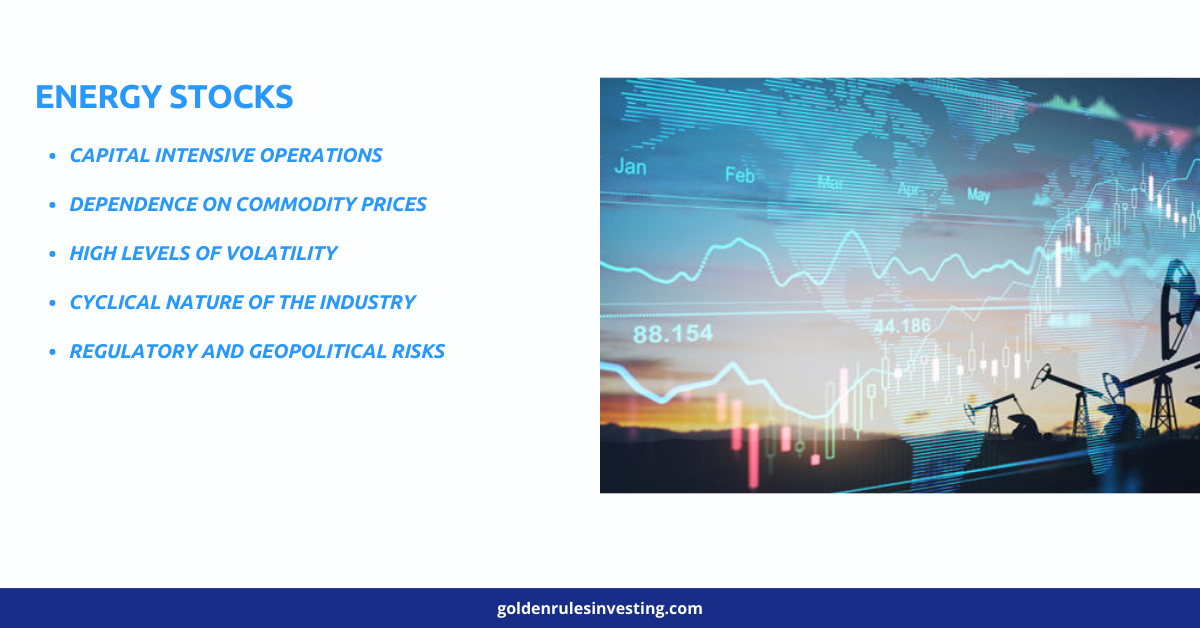
What is the Energy Sector, and How Does It Work?
The energy sector refers to stocks that produce or supply energy. Companies engaged in the exploration, development and drilling of oil and natural gas resources, as well as refining and refinement, are part of the energy industry. In addition to integrated power utilities such as renewable energy or coal, the energy industry also includes companies involved in the exploration and development of oil or gas reserves.
Understanding the Energy Sector
The energy sector is a large, broad term that refers to an interconnected network of companies directly and indirectly involved with the production and distribution and use of energy.
There are many types of energy that companies in the energy sector can be involved with. Energy companies can be classified based on the source of their energy. This will usually fall within one of two categories.
Non-renewable
Petroleum products and oil
Natural gas
Gasoline
Diesel fuel
Heating oil
Nuclear
Coal
Renewable
Hydropower
Biofuels such ethanol
Wind power
Solar power
Hydroelectric
Secondary sources, such as electricity, are also part and parcel of the energy industry. The global demand for energy and the price of energy are both heavily influenced by their earnings.
Oil and Gas producers perform better when prices rise. However, energy companies lose more when the price for energy commodities drops. When crude oil prices fall, oil refiners are able to benefit from the lower cost of fuelstock, which allows them to produce petroleum products such gasoline. The energy industry is sensitive because of political events that have historically caused volatility and wild fluctuations in oil prices.
Exxon Mobil (XOM) is one of the major oil firms in the United States. Chevron and Chevron are the other two significant integrated multinational oil firms. In 2020, the production of America’s biggest coal producer, Peabody Energy (BTU), was measured in tons.
Types of companies from the energy sector
These are some of these companies working in the energy business. Each type of company plays a different role in bringing the energy to consumers or businesses.
Drilling and production of oil & gas
These are the companies who drill, pump, produce and transport oil and natural gas. The process of producing oil is usually done by extracting the oil from the ground.
Pipeline and refinement
Oil and natural gases must be moved from their source to a refinery, where they can be refined into gasoline. This sector is known as the midstream provider.
Mining companies
Since coal is used in power plants including nuclear, coal companies could be classed as energy companies.
Renewable energy
Clean energy has attracted investment dollars and gained momentum over the years. In the future, it is likely to become a larger part of the sector. Wind and solar are examples of renewable power.
Chemicals
Some companies specialize only in refining oil or gas into specialty chemical, but many larger oil-producing companies, such as Exxon Mobil, are integrated energy producers. They produce multiple types of energy, and control the entire process.
Examples of Energy-Sector Investments
Investors have many options in the energy market, including ETFs, mutual funds and energy company equities, as well the ability to buy commodities.
ETFs (exchange-traded funds) are a collection of investments like stocks that track an underpinned index. Mutual funds, however, are a collection of investments or stocks that have been selected by a manager.
There are many energy-related ETFs available that provide exposure for retail investors to the energy industry. With any number funds, investors have the option to pick which part of this value chain they are interested in. Below are some examples for energy ETFs.
The Energy Select Sector SPDR ETF XLE (XLE) offers exposure to companies in the energy sector. Exxon Mobil (Oil Producers) and Chevron (Technology Suppliers) are both included in the XLE.
The SPDR S&P Oil & Gas Exploration & Production ETF XOP provides investors with exposure and control over oil and gas exploration companies.
The Invesco solar ETF (TAN), offers investors access to alternative investment opportunities.
How investors invest in the energy industry will depend on their personal preferences and views about the growth potential and earnings prospects. The energy industry has a much broader and more diverse scope than that of oil and gas. Many investors believe that renewable energy and alternative sources of energy will play an important role in future, especially as electric cars continue to increase in demand.
What is the Energy Sector Responsible?
The vital role of the energy sector is crucial to the economic success. Apart from powering homes and transport, energy sources also play an important role in many products we use daily.
What are the major energy sectors?
The Global Industry Classification Standard(GICS) divides the energy sector into two major industries: “energy machinery and services” (oil, gas and consumable fuels), and then there are many sub-sectors.
Oil and gas drilling
Oil and gas equipment & services
Integrated oil & gas
Exploration and production for oil and natural gas
Marketing and refining oil and gas
Transportation and storage of oil & gas
Consumable fuels, coal and petroleum
What is the difference in the Energy Sector from the Utility Sector?
The largest part of the energy industry is made up of companies involved in producing, refining, and extracting energy. Utility companies focus on providing utilities such as electricity and water to customers. Both sectors offer electricity to customers in some way. But their roles differ, with different components of the energy industry responsible for providing the electricity that utility companies sell to customers.
The Bottom Line
The energy sector has a large market. It includes various energy sources like natural gas, electricity, coal, and renewables.
The outlook for companies in the energy industry can be quite different. The only thing that connects them all is that they are involved in bringing energy to market.





